Thuja "Hozeri": description, features of planting and care
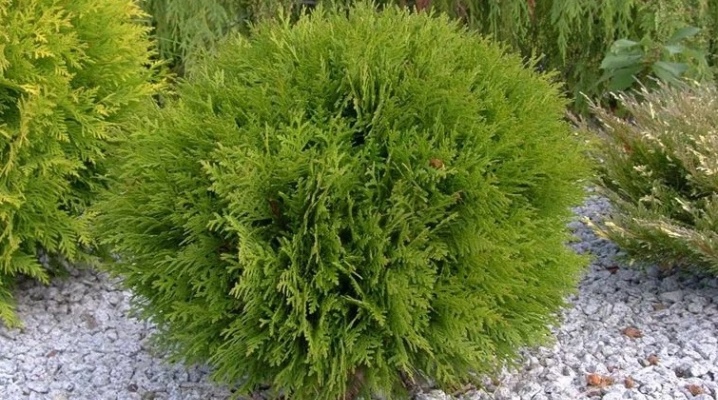
Tui are one of the most sought-after representatives of conifers, which are widely used for landscape design. There are many species of this evergreen shrub that vary in size and shape. Among the western spherical thujas such a beautiful variety as "Hozeri" can be distinguished.
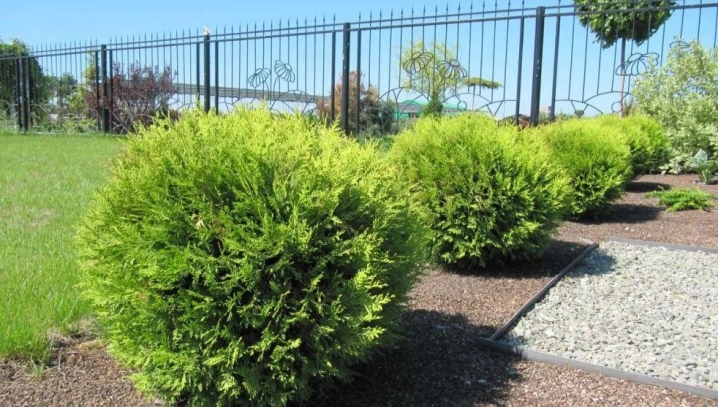
Description
Thuja variety "Hozeri" appeared thanks to breeders from Poland. A distinctive feature of the shrub is its relatively small size and rounded shape. In length, the plant reaches no more than 90 cm. The growth rate of the spherical thuja "Hozeri" is small: shrub growth per year is no more than 5 cm.
This variety belongs to multi-barreled. This means that each individual shrub has several thick trunks, from which branches are already extending. The color of the plant changes depending on the season. In warm seasons, the needles of the bushes have a rather rich dark green hue. In autumn, the thuja is painted in red-brown tones, and in winter the color becomes lighter.
Despite the color change, the plant does not lose its attractiveness and does not shed its needles. The crown is renewed every 3 years. This process takes place almost imperceptibly, as the needles fly around and grow gradually.
The needles do not exceed 4 mm in length.
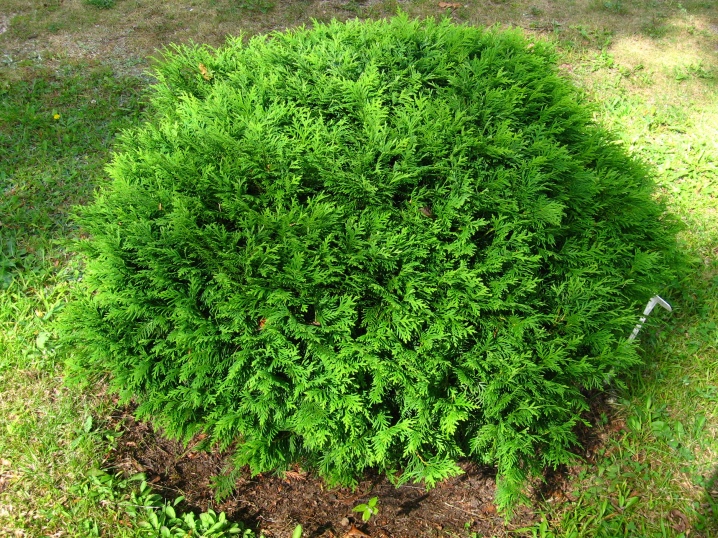
Thuja "Khozeri" has good winter hardiness and easily tolerates frosts at -29 °. Due to their compact size and spherical shape, the shrubs are not afraid of strong winds, but they are sensitive to an arid climate. Plants are durable and not demanding to care for. The older the “Hozeri” thuja becomes, the less often it will need pruning to form a crown.
How to plant?
Despite the fact that this variety tolerates frosts well, planting is recommended before the onset of cold weather, so that the plant has time to take root in the soil. Usually, planting is carried out in the fall or spring. Due to its unpretentiousness, this variety can grow almost anywhere. However, in order to facilitate further care of the plant, it is necessary to provide it with the most comfortable growing conditions. To disembark, you need to find a place on the site that will meet the following requirements:
- it is desirable that the selected area be well lit, but it is allowed to plant thuja in shaded areas.
- the site should not be exposed to constant drafts, and it is also advisable that the site be protected from strong gusty winds.
- the surface at the landing site should be relatively flat so that water does not stagnate during snow melting or during periods of heavy rains.

With regard to the composition of the soil, then the best option would be a light soil. For the preparation of the substrate, peat, sand and ordinary soil from the site are usually used in proportions 1X1X2. At the bottom of the pit, it is recommended to lay drainage with a thickness of at least 15 cm. The drainage layer is made of crushed stone, brick chips or expanded clay.
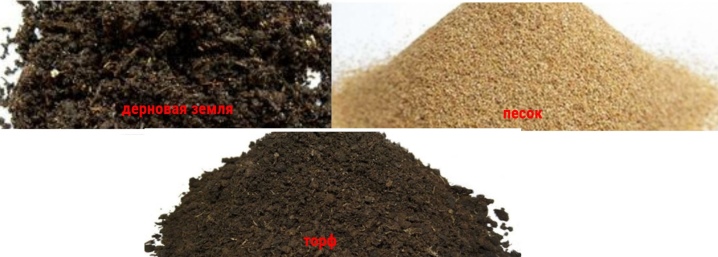
The size of the pit primarily depends on the root system of the plant. The hole should exceed the size of the roots by about 30 cm in width and 15 cm in length. Thuja is neatly placed in the center, the roots must be straightened and covered with a substrate. In this case, the root collar should not go underground, but protrude 3 cm on the surface.
After planting, it is necessary to process the area around the hole, compacting the soil and forming small sides. This is necessary so that during watering the water does not go far beyond the plant's root system. It is recommended to cover the soil immediately with mulch. For mulching, you can use bark or wood chips.
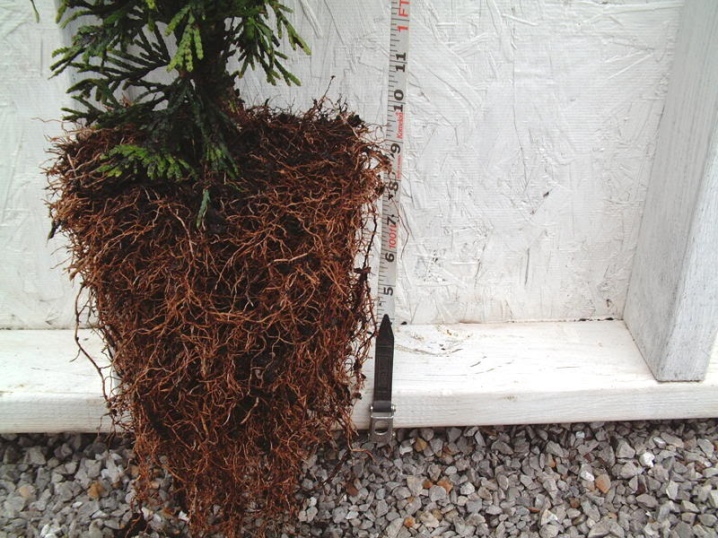
How to care?
Timely care of thuja is essential for stable growth and good plant health. The shrubs do not need any complicated procedures, and therefore special skills and extensive experience in gardening are not required to grow the Hozeri variety.
Watering
Coniferous crops need regular irrigation, the frequency of which largely depends on the climate. It is important to ensure that the soil around the trunk of the bush does not dry out. Usually, one soil moistening per week is enough. At a time, a large bucket of room temperature water is poured into the soil per bush.
As for the watering time, the most suitable for this procedure are the morning or evening hours.
In particularly hot periods, you will need to water the plants more often. On request, you can organize drip irrigation.

Top dressing
Fertilizing the plant is necessary so that it receives all the necessary nutrients. In the first 2 years after planting, the shrub does not need feeding. Already after this period, the fertilization procedure is recommended to be carried out at least once a year.
As a top dressing, you can use both organic substances and special compositions. From organic matter, cow dung and compost are the most suitable. As for the finished products, you can use phosphate fertilizers, which must be applied in accordance with the instructions.
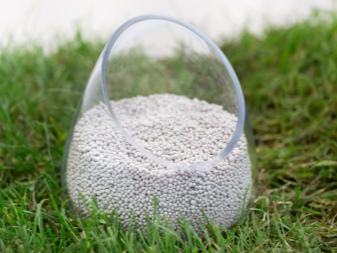

Winter preparation and pruning
Thuja "Hozeri" tolerates cold well, but additional preparation of the shrub for the winter season will not be superfluous. This procedure is necessary so that the branches of the plant do not break under the weight of the snow. Also, winter sunlight negatively affects the crown, which can lead to burns of shoots.
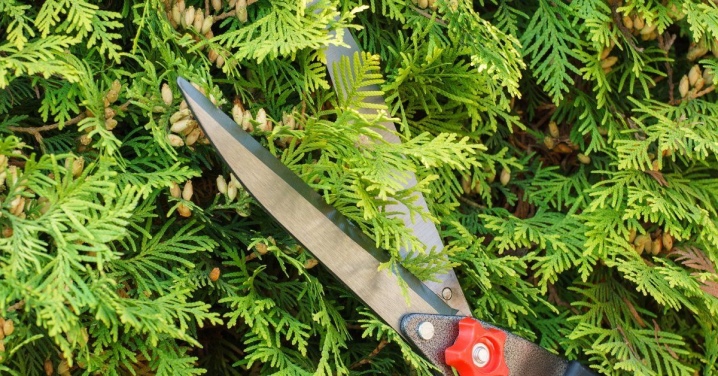
Before the onset of cold weather, you need to prepare a special shelter for the thuja in the form of a hut. A frame of strong thick branches or wooden blocks is installed around the bush. The construction is covered with burlap or dense fabric.
With the onset of spring heat, the shelter needs to be removed, and cut off. First of all, shoots that are damaged or dry are removed. To shape the bush, the branches are cut by 1/3. If necessary, the shortening procedure can be repeated in one season.
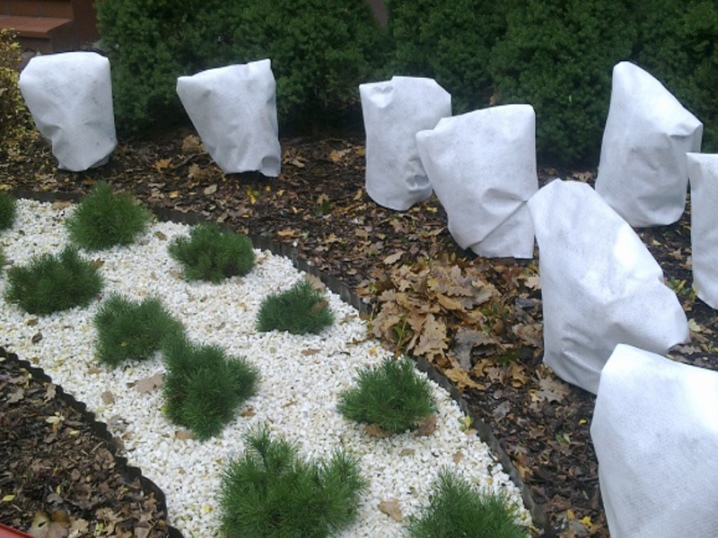
Reproduction
All varieties of thuja mainly reproduce in 2 ways:
- seeds;
- cuttings.
The vegetative breeding method is considered to be the simplest. Growing from seeds requires more skills and an investment of time and effort. Before planting seeds, they need to be prepared in advance.
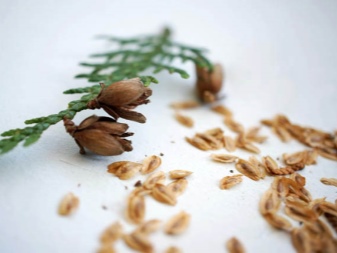
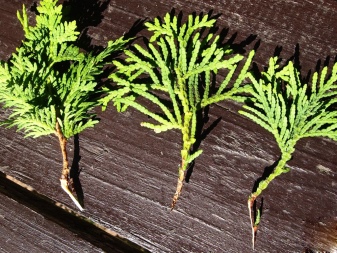
Seed collection is carried out in late summer or early autumn. Sowing can be done directly in open ground or in a wooden box. The substrate should be made up of ordinary garden soil, soil, and sand. Planting material is placed in the ground 1 cm at intervals of 5 cm.If planting is carried out in open ground, then the distance between the rows should be approximately 30 cm.
With the vegetative propagation method, cuttings are harvested at the end of autumn. The branches are cut to a length of 15 cm. The cut of the shoot is stripped of needles, after which the branch is placed in water for rooting. When the plant takes root, it is planted in a small greenhouse, pots or containers.
When planting in a container or pot, the container must be placed under glass or transparent film. Periodically, you need to ventilate the threshing floor, otherwise the stalk may simply rot. During greenhouse germination, it is recommended to spray the plant instead of the usual watering.
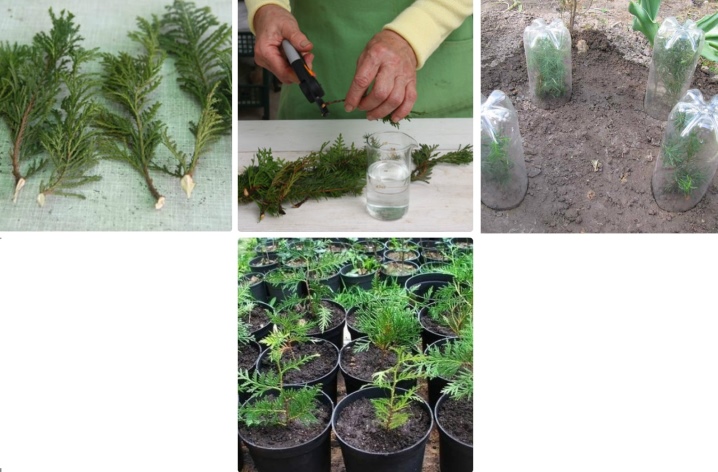
Application in landscape design
The Khozeri variety is considered versatile in terms of use in landscape design due to its attractive appearance and compactness.Shrubs work well for creating live borders on the plot. With the help of single, separately planted bushes, you can create some accents on areas of a large area.
Thuja is perfect for forming beautiful compositions with other cultures. The coniferous plant can be used to create an alpine garden.
And also low spherical shrubs are used to decorate balconies, roofs and verandas, planting them in special containers.

How to care for the western thuja "Hozeri", see the video below.



































































The comment was sent successfully.